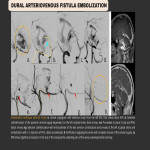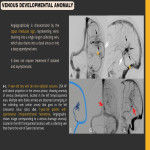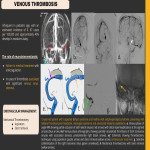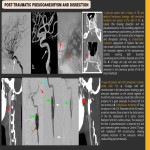Learning objectives
Review of pediatric patients undergoing diagnostic and therapeutic neuroendovascular procedures in the last 10 years in a tertiary pediatric Hospital.
Describe clinical and imaging findings of the most common neurovascular pediatric pathologies, in particular angiographic findings, before and after endovascular treatment.
Describe the most frequent endovascular treatments used in children and their complications.
Background
There is continuous development of new techniques and devices in the area of interventional neuroradiology applied to the pediatric population. These procedures and pathologies are uncommon for the general radiologist/pediatric radiologist. A contemporary review for non-experts of these diseases and techniques is lacking. The aim of this presentation is to review and describe the most common imaging findings and endovascular techniques used in pediatric interventional neuroradiology. We did a retrospective review of all pediatric cases with suspected or diagnosed neurovascular diseases, who underwent diagnostic and/or...
Findings and procedure details
The data selected for this review consisted of 230 angiographies performed in 164 pediatric patients (under 18 years). The studies can be divided into two groups, diagnostic arteriography (n173) and angiograms performed as part of an endovascular treatment (n147). The study population included 92 boys and 72 girls, aged between 1 week and 18 years (mean of 9. 3 years). The angiographic diagnosis for the study population are listed in table 1. No vascular anomalies were found in 35 patients, confirmed in subsequent follow-ups with...
Conclusion
Interventional neuroradiology plays a crucial role in the diagnosis and treatment of children with neurovascular pathologies. General radiologists should be familiar with them, because early recognition is essential to improve the morbidity and mortality of these children.
Personal information and conflict of interest
L. A. Mendoza Corredor:
Nothing to disclose
P. Caro Dominguez:
Nothing to disclose
E. Zapata Arriaza:
Nothing to disclose
M. Aguilar Perez:
Nothing to disclose
J. Ortega Quintanilla:
Nothing to disclose
A. Alboniga-Chindurza Barroeta:
Nothing to disclose
A. González García:
Nothing to disclose
References
A. Reyre, J. Michel, L. Santini, P. Dessi, V. Vidal, J.-M. Bartoli, G. Moulin, A. Varoquaux,Epistaxis: The role of arterial embolization, Diagnostic and Interventional Imaging, Volume 96, Issues 7–8, 2015, Pages 757-773, ISSN 2211-5684, https://doi.org/10.1016/j.diii.2015.06.006.
Burger IM, Murphy KJ, Jordan LC, Tamargo RJ, Gailloud P. Safety of cerebral digital subtraction angiography in children: complication rate analysis in 241 consecutive diagnostic angiograms. Stroke. 2006 Oct;37(10):2535-9. doi: 10.1161/01.STR.0000239697.56147.77. Epub 2006 Aug 31. PMID: 16946163.
Carvalho de Campos Martins, Estêvão et al. “Similarities and Differences Between Primary Percutaneous...
































